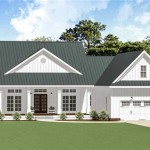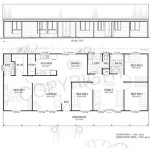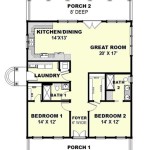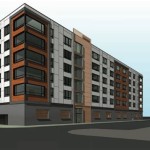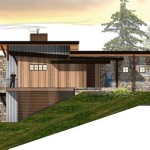House Plans With Hip Roof
A hip roof is a type of roof that slopes down on all four sides of a house. This type of roof is often used in areas with high winds or heavy snowfall, as it is more stable and durable than other types of roofs. Hip roofs can also be used to create a variety of different architectural styles, from traditional to contemporary.
There are a few different types of hip roofs, including the simple hip roof, the cross-hip roof, and the gambrel hip roof. The simple hip roof is the most common type of hip roof, and it consists of four triangular faces that meet at a ridge at the top of the roof. The cross-hip roof is a more complex type of hip roof, and it consists of two intersecting hip roofs. The gambrel hip roof is a type of hip roof that has a curved shape, and it is often used on barns and other agricultural buildings.
Hip roofs can be constructed from a variety of materials, including asphalt shingles, metal, and tile. The type of material used will depend on the climate and the architectural style of the house. Asphalt shingles are the most common type of roofing material used on hip roofs, as they are relatively inexpensive and easy to install. Metal roofs are more durable than asphalt shingles, but they are also more expensive. Tile roofs are the most expensive type of roofing material, but they are also the most durable and long-lasting.
Hip roofs can be a great option for a variety of different homes. They are durable, stable, and can be used to create a variety of different architectural styles. If you are considering building a new home, or if you are looking to replace your existing roof, a hip roof is a great option to consider.
Benefits of Hip Roofs
There are a number of benefits to choosing a hip roof for your home. These benefits include:
- Durability: Hip roofs are more durable than other types of roofs, as they are less likely to be damaged by high winds or heavy snowfall.
- Stability: Hip roofs are also more stable than other types of roofs, as they are less likely to collapse in the event of a strong wind or earthquake.
- Versatility: Hip roofs can be used to create a variety of different architectural styles, from traditional to contemporary.
- Energy efficiency: Hip roofs can be designed to be energy efficient, as they can help to reduce heat loss in the winter and heat gain in the summer.
Drawbacks of Hip Roofs
There are also a few drawbacks to choosing a hip roof for your home. These drawbacks include:
- Cost: Hip roofs are more expensive to construct than other types of roofs.
- Complexity: Hip roofs are more complex to construct than other types of roofs, which can lead to longer construction times.
- Maintenance: Hip roofs require more maintenance than other types of roofs, as they are more likely to accumulate dirt and debris.
Overall
Hip roofs are a great option for a variety of different homes. They are durable, stable, and can be used to create a variety of different architectural styles. However, hip roofs are more expensive to construct and maintain than other types of roofs. If you are considering building a new home, or if you are looking to replace your existing roof, a hip roof is a great option to consider.

Simple House Plans 6x7 With 2 Bedrooms Hip Roof Gable Small Design

Studio House Plans 6x8 Hip Roof Tiny Plan Gallery 8fe South Beautiful Tuscan

Buy A Plan Of House With Hip Roof Eplan

Simple House Design 6x7 With 2 Bedrooms Hip Roof Small

4 Bed House Plan With A Hip Roof 58443sv Architectural Designs Plans

Hip Roof House Plans Roofgenius Com

House Plans 12x8 With 3 Bedrooms Hip Roof Samhouseplans Open Floor Town Simple

Small House Plans 9x7 With 2 Bedrooms Hip Roof Samhouseplans

House Plans 12x8 With 3 Bedrooms Hip Roof Samhouseplans

Hip Cottage 1260 Sf Southern Cottages

